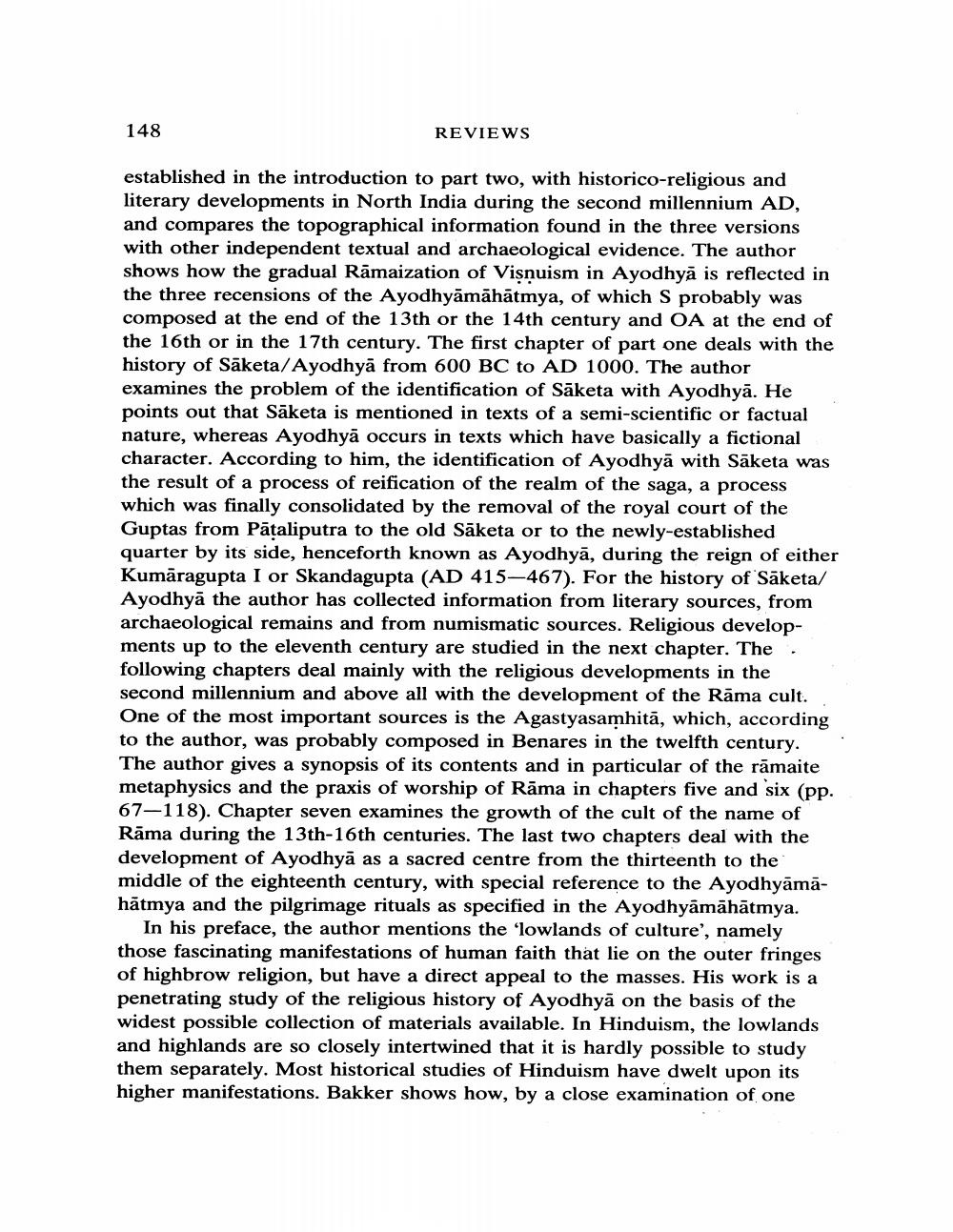Book Title: Book Reviews Author(s): J W De Jong Publisher: J W De Jong View full book textPage 6
________________ 148 REVIEWS established in the introduction to part two, with historico-religious and literary developments in North India during the second millennium AD, and compares the topographical information found in the three versions with other independent textual and archaeological evidence. The author shows how the gradual Rāmaization of Visnuism in Ayodhya is reflected in the three recensions of the Ayodhyämähätmya, of which S probably was composed at the end of the 13th or the 14th century and OA at the end of the 16th or in the 17th century. The first chapter of part one deals with the history of Saketa/Ayodhyā from 600 BC to AD 1000. The author examines the problem of the identification of Säketa with Ayodhya. He points out that Saketa is mentioned in texts of a semi-scientific or factual nature, whereas Ayodhya occurs in texts which have basically a fictional character. According to him, the identification of Ayodhya with Säketa was the result of a process of reification of the realm of the saga, a process which was finally consolidated by the removal of the royal court of the Guptas from Pâțaliputra to the old Säketa or to the newly-established quarter by its side, henceforth known as Ayodhya, during the reign of either Kumāragupta I or Skandagupta (AD 415-467). For the history of Saketa/ Ayodhya the author has collected information from literary sources, from archaeological remains and from numismatic sources. Religious developments up to the eleventh century are studied in the next chapter. The following chapters deal mainly with the religious developments in the second millennium and above all with the development of the Rāma cult. One of the most important sources is the Agastyasamhitä, which, according to the author, was probably composed in Benares in the twelfth century. The author gives a synopsis of its contents and in particular of the rămaite metaphysics and the praxis of worship of Rāma in chapters five and six (pp. 67-118). Chapter seven examines the growth of the cult of the name of Rāma during the 13th-16th centuries. The last two chapters deal with the development of Ayodhyā as a sacred centre from the thirteenth to the middle of the eighteenth century, with special reference to the Ayodhyāmāhätmya and the pilgrimage rituals as specified in the Ayodhyämähätmya. In his preface, the author mentions the 'lowlands of culture', namely those fascinating manifestations of human faith that lie on the outer fringes of highbrow religion, but have a direct appeal to the masses. His work is a penetrating study of the religious history of Ayodhya on the basis of the widest possible collection of materials available. In Hinduism, the lowlands and highlands are so closely intertwined that it is hardly possible to study them separately. Most historical studies of Hinduism have dwelt upon its higher manifestations. Bakker shows how, by a close examination of onePage Navigation
1 ... 4 5 6 7 8 9 10 11 12 13 14 15 16 17 18 19 20 21 22 23 24
